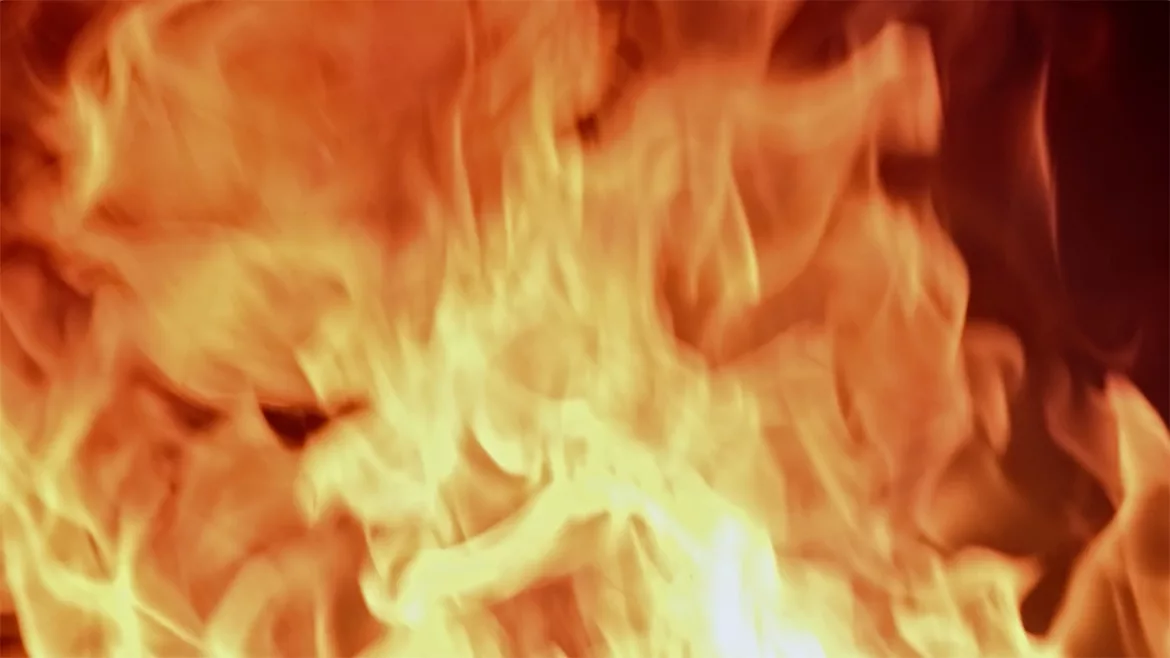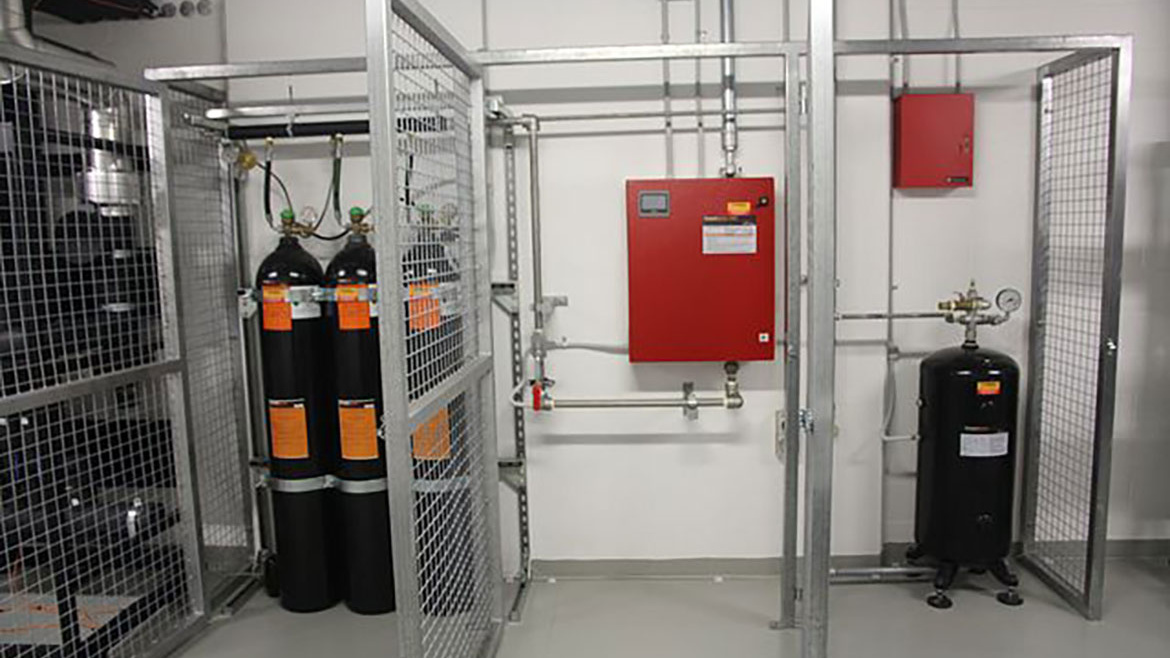Balancing environmental responsibility and effectiveness in fire protection systems
Trends driving the future of fire protection design and construction.

Image courtesy batuhan toker / Creatas Video+ / Getty Images Plus
From protecting hospitals filled with life-saving equipment to the data centers that power the digital world, the demand to deploy smarter, cleaner and more efficient fire protection solutions has never been greater. To provide the best solutions in modern buildings, fire protection engineers, contractors and manufacturers must keep up with constantly shifting regulations and fire code requirements, evolving market needs and emerging technologies.
This article will look at some of the growing trends driving fire protection design and construction, including the regulatory changes shaping how engineers select the most effective solutions, the technological innovations revolutionizing every step of the design and installation process and the growing need for engineers, contractors and manufacturers to proactively collaborate with their Authorities Having Jurisdiction (AHJs).
Demand for environmentally-friendly solutions
Special hazard applications are significantly impacted by tightening environmental regulations, as they often require special suppression solutions, such as hybrid and chemical extinguishing agents, to effectively protect a space without the option to fall back on water-based alternatives.
Over the years, governments and regulatory bodies have implemented changes to reduce global ozone depletion and global warming. Regulations such as the Kigali Amendment and American Innovation and Manufacturing (AIM) Act encourage fire protection engineers to phase out or restrict the use of certain chemicals commonly found in extinguishing agents, such as halons, chlorofluorocarbons (CFCs) and hydrofluorocarbons (HCFs). Another growing discussion in the push for environmentally-friendly solutions is the presence of per- and polyfluoroalkyl, or "PFAS", substances in clean agents. PFAS, known as "forever chemicals," are notorious for their long breakdown times in the environment, leading to water and soil contamination as well as health risks in humans. The European Union has banned over 200 PFAS subgroups, with a phaseout that began in February 2023. In the U.S., the EPA finalized a rule preventing the manufacturing and processing of 329 PFAS substances in 2024.
Today’s fire protection engineers are challenged to design fire protection systems that balance effectiveness and environmental responsibility. They must find solutions to reduce added costs associated with maintaining phased out extinguishing agents or, worse, the need for full system redesign and replacement. Hybrid fire extinguishing systems, which utilize a combination of water and inert gas, are a viable alternative to achieve these goals in special hazard areas.
Using some of the most abundant elements in the environment, hybrid systems effectively remove heat from fires and help block both radiative and convective heat with water droplets smaller than 10 microns. The inert gas component — often nitrogen — effectively extinguishes smaller fires, especially in large, naturally ventilated environments. In addition to its environmentally-friendly extinguishing agents, hybrid systems are distinguished by their near-zero wetting benefit, which minimizes damage risk to electrical equipment and other water-sensitive components. For example, hybrid extinguishing systems can be used in hospitals because they're safe to deploy in occupied spaces, minimize contamination in sterile environments, and system operations can resume immediately after clean-up and once the hybrid system is refilled.
In 2020, the National Fire Protection Association introduced NFPA 770, the Standard on Hybrid (Water and Inert Gas) Fire-Extinguishing Systems, which provided the first comprehensive guidance for hybrid systems and represented a crucial advancement across the industry in adopting the technology. Ongoing testing programs continue to explore the technology's performance limits and capabilities across an expanding range of environments, applications and scenarios, enabling fire protection engineers to make informed decisions about system design and installation in existing, evolving and emerging markets.

Victaulic Vortex™ Hybrid Fire Extinguishing System installed inside a data center includes three nitrogen tanks, a low voltage control panel and a self-contained water supply. Image courtesy of Victaulic
Solutions to compress construction schedules
As construction timelines tighten and building complexity increases, projects benefit from installation solutions that enhance efficiency without compromising reliability. The demand for faster installation schedules is prompting a shift toward pre-assembled components and strategic product selections that simplify both installation and commissioning processes.
Pre-assembled solutions — such as headers, risers and manifolds — are increasingly used to accelerate installation and minimize rework, particularly in large-scale projects. Standardizing system designs with assemblies offers contractors a more predictable and repeatable installation process, reducing variability and improving overall efficiency on-site. By incorporating these solutions, contractors can install systems more quickly than if they had to assemble each individual component while maintaining quality throughout the project. Even saving a couple of minutes per sprinkler or pipe connection can create a significant ripple effect in projects with hundreds of parts. To maximize efficiencies, contractors and engineers should work closely with their manufacturers and suppliers to understand the full product spectrum available and select solutions designed for their unique project needs.
In addition to cutting down on installation time, selecting products designed for intuitive inspection and system verification allows project teams to confirm proper functionality with minimal disruption. These built-in features can help reduce troubleshooting time, prevent delays, and enhance the reliability of fire protection systems, minimizing the time and effort required to ensure systems meet safety and performance standards. Collaborating with manufacturers can also provide valuable insight into verification-friendly product options that further streamline quality control.
As fire protection technologies continue to evolve, integrating these efficiency-driven solutions will be essential for meeting the demands of modern construction projects.
Partner with AHJs for advanced fire protection
From more advanced fire suppression systems to smart detection devices and integrated building safety solutions, fire technology and standards are evolving at an accelerated pace. Yet their adoption within local jurisdictions continues to move slowly. By working closely with AHJs, engineers can advocate for the inclusion of new technologies in local projects. Leveraging special allowances to implement cutting-edge technologies and design approaches before widespread adoption in local fire codes not only enhances safety but also provides building owners with a longer return on investment. When systems are designed with the latest developments and standards, it reduces the potential need for premature system overhauls or costly retrofits to bring outdated systems up to compliance.
AHJs play a critical role in interpreting and enforcing fire codes, and involving them early in the planning and design phases can ensure the most effective system is utilized regardless of the speed at which local jurisdictions adopt modern fire code standards. NFPA offers a pathway for special allowances that allow projects to use innovative fire protection solutions that may not yet be fully integrated into the current local code. Engineers can safely implement groundbreaking technologies by gaining a thorough understanding of the request process and working closely with AHJs to implement them.
Embracing this collaborative approach to the approval process can be particularly valuable in lengthening the efficacy lifecycle of fire protection systems. Since technological advancements can move faster than code development, a system designed today may be outdated sooner than anticipated if it is not implemented with future-proofing in mind. As fire protection becomes increasingly complex, contractors and engineers who build strong working relationships with AHJs will be best positioned to deliver forward-thinking, code-compliant solutions that can withstand the test of time.
Future-proofing fire protection
Engineers and contractors have many avenues to explore when considering how to design fire protection systems that can withstand ongoing changes in influencers such as environmental regulations, schedule demands and rapid technological advancement. Staying ahead of these trends is essential — not only to provide fire code-compliant systems but also to implement solutions that enable the faster deployment of systems designed to meet their buildings’ evolving needs and requirements. Looking ahead, balancing compliance and cost-effectiveness while integrating technology innovations into both new and existing infrastructures will be crucial. Fire protection strategies must evolve accordingly — always ensuring safety without compromising efficiency, while looking out for the best interest of the systems owner or end-user.
Looking for a reprint of this article?
From high-res PDFs to custom plaques, order your copy today!







